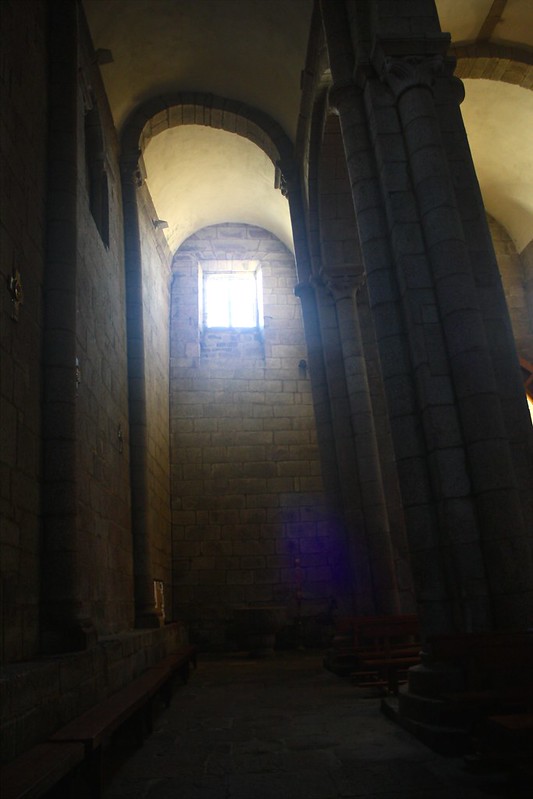Photo Post: Colexiata de Sar, the Leaning Church of Santiago de Compostela, Spain
 |
| Central nave |
Most days of the week. I end up passing through Santiago de Compostela’s Praza de Galicia, a major hub for traffic and city buses traversing the northeast-to-southwest sprawl of this regional capital. On my way home, I usually head east along the city’s main loop, a road that changes its name about eight times as it circles Santiago’s small but stately historic center.
 |
| Right aisle |
Before I reach the side street that leads down to my apartment, I pass by a large, bold magenta sign informing drivers of a “Colexiata de Sar” down to the right. Walking past this sign nearly every day for a month after I moved to Santiago made me think that there had to be something pretty significant for there to be a tourist sign put up for it.
 |
| Left aisle |
So, one day I descended down Santiago’s central bluff, under the highway and train tracks, to the edge of the Sar River. Here, in a quiet residential neighborhood, I came across a simple church that dates to the Romanesque era of architecture (think medieval times), but with six great stone buttresses flying out from either side of the church. The buttresses seemed kind of odd, as that architectural element came into vogue centuries later when the grand Gothic cathedrals needed them to prop up their soaring walls.
 |
| Flying buttresses |
The Colexiata de Santa María a Maior e Real de Sar, or the “Royal Collegiate Church of St. Mary Major of Sar,” was built on some rather swampy land by the riverbanks, so by the 1700s things had gotten so bad that the walls, columns, and vaulting were buckling outward. Oops. To save it from collapse, the authorities had some granite buttresses built on either side to prop up the church. Today, it’s a fun building to explore—not only for being an architectural oddity in Santiago but also for holding a simple yet well-preserved example of Romanesque architecture, both inside the church and in its calm cloisters.
 |
| Gallery of buttresses |
What other “Leaning Towers of Pisa” can you think of? What was your favorite photo from this post? Leave your thoughts in the comments below!


